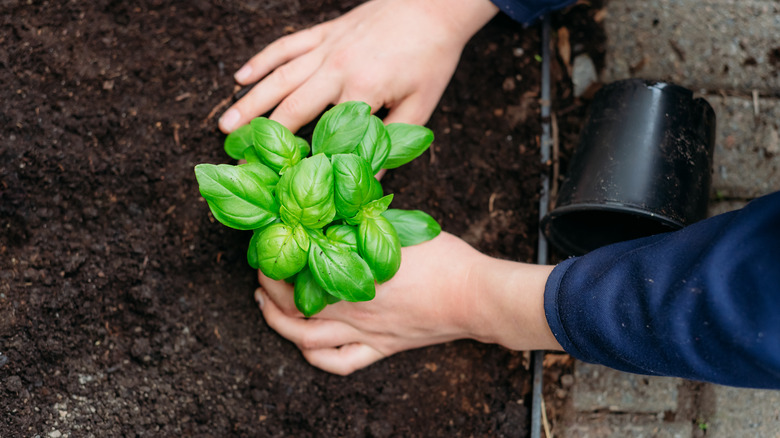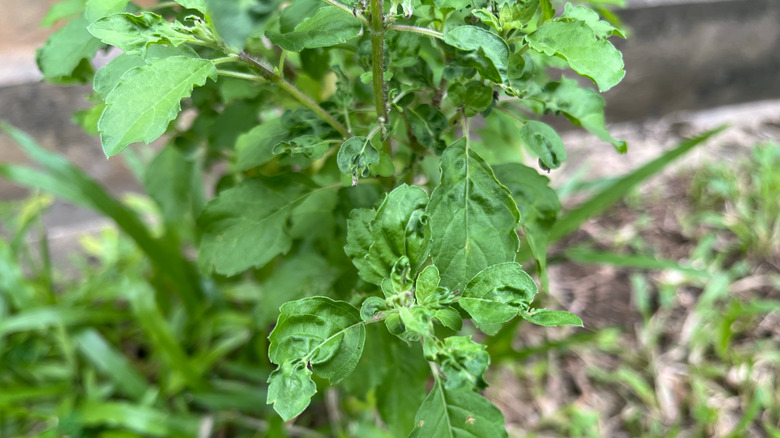How To Revive Wilting Basil For A Healthy Plant All Summer
Basil (Ocimum) is relatively easy to grow for gardeners of all experience levels, especially when you follow helpful tips to ensure a bountiful harvest. You may already adhere to some of the basic rules of growing basil, such as growing these plants in well-draining soil and placing them in locations where they can get between six and eight hours of sunlight per day. Despite ideal growing locations, you might come across wilting leaves in your basil plants from time to time. It's important to address the underlying causes of wilting foliage so you can continue to enjoy healthy plants all summer long. In the case of basil, the most common causes of wilting are related to watering and certain diseases.
If your basil plant has wilting leaves and the soil is dry, chances are that it simply needs a bit more water. This is especially the case if the foliage doesn't have discoloration. As a general rule, basil requires about 1 ½ inches of water every week. You can also provide a deep watering at least once a week, depending on how much rainfall the plant receives. You might also need to water container-grown basil more frequently, as these tend to dry out quicker. The best method for watering your basil plants is one that targets the roots of the plant while preventing excess water on foliage that can lead to diseases. Once you start giving basil plants enough water, they should no longer be wilting unless they have certain fungal or bacterial diseases.
Signs that wilting basil is not caused by a lack of water
The key to watering basil enough to prevent wilting is to determine whether or not this is truly the problem that's ailing your plant. If you see other unusual signs outside of wilting foliage, it's possible that your basil plants may be fighting certain diseases. The most common diseases that cause wilting include basil downy mildew, fusarium wilt, and bacterial wilt. Unfortunately, once these diseases take over, your best option is to remove the affected basil plants to protect any healthy ones that remain, so they have a chance to thrive throughout the rest of the season.
Basil downy mildew is a fungal disease that can quickly develop in a basil plant. You might notice slight yellowing of the affected foliage as well as brown spots and a fuzzy growth on the undersides of the leaves before the plant rapidly wilts. Fusarium wilt, on the other hand, may not cause wilting in a basil plant until it grows between 6 and 12 inches tall. This is another type of fungal disease that survives in soil and may not affect plants for up to several years. Once a plant is infected, the fungus prevents water uptake through its stems. You may notice that the affected plant develops brown stems and your basil leaves are turning yellow before it suddenly stops growing and then wilts. Bacterial wilt is another soil-borne disease that can affect basil plants by infecting their roots and filling stems with slime. A basil plant that is affected by this disease may suddenly wilt while its leaves still look normal.

